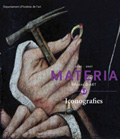Cinema and Cubism. A new approach.
Abstract
The first aim of this paper is to situate cinema as a key agent in the 20th century dismantling of the Classical perspective inherited from the Renaissance, which gave way to what we now refer to as the post-modern era.The second aim is to highlight the fundamental role of cinema in the emergence of new plastic languages, with their greater capacity for expressing the nascent sensibilities of the early 20th century, and its interaction with the avant-garde. Cinema and Cubism are two modes of artistic expression that emerged within a few years of one another, both of which are concerned with aesthetic renewal and the discovery of new forms of expressive rhetoric. Given these common aims, we can say that at the start of the 20th century, these artistic expressions shared four novel elements (movement, fragmentation, principle of association and new visual perspectives), which gave rise to a renewed way of looking at the world, far removed from the one-dimensional representations of the past, and which freed artistic production from the restrictions of traditional representation. As such, the theory of Cubism and the rhetorical techniques of cinema worked from their very beginnings towards the discovery of a total perception, beyond that which had been achieved prior to their emergence.Downloads
Published
2009-02-17
Issue
Section
ICONOGRAFIES
License
The authors who publish in this journal agree to the following terms:
|  |







